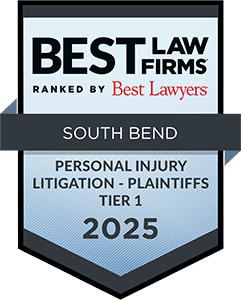The word “recall” is a dreaded one to everyone. It is associated with faulty, dangerous products that lead to injury, sickness, and even death. Contrary to belief, the recalls reported in the nightly news are not the only ones announced by the U.S. Food and Drug Administration (FDA) or the National Highway Traffic Safety Administration (NHTSA), and other government agencies.
Also left out of the news are the numerous voluntary recalls announced by product manufacturers. According to the recall clearinghouse RASMUS (Risk and Safety Management Alert System) there were an average of 67 recall alerts per week in the first six months of 2010.
With these numbers, consumers are almost certain to have a faulty product in their possession.
So, what steps should you take if that product causes you injury? Our South Bend defective product attorneys recommend you:
1. Get medical attention immediately.
Not only does it ensure that your injuries are treated properly by medical professionals, a trip to the family doctor or emergency room is also a great way to document the injury for the courts. Consider it evidence with which to build your case. The medical record usually contains a narrative describing how the injury occurred as well as the doctor’s professional opinion on the official cause of injury and prognosis for the patient.
2. Follow the instructions within the recall notice.
Some ask that you contact the manufacturer to report the injury, while other announcements direct the injured toward the Consumer Product Safety Commission (CPSC) and other government agencies coordinating the recall. However, you should always contact the CPSC, even if the recall announcement only asks you to report to the manufacturer. The extra documentation of your injury report will help later if litigation is necessary.
Record the names of the people you spoke to and the time and date the reporting took place.
3. Capture the evidence.
Take photos of the product and your injury, if possible, to record the damage. Get the names and contact information for any witnesses to the incident as well. Your attorney may need these to help build the case.
4. Take everything to the personal injury attorney.
Present your case to them, including the photos, witness contacts (and witness statements if you have them), medical bills and any medical records you may have. Just give the attorney the information—everything you have–and let them build your case.
Do not presume that some evidence is more important than others. You may be withholding the one thing needed to decide the case in your favor.
Product injuries can be devastating. Some may even lead to death. No one deserves to suffer from an injury received after handling a faulty product, be it contaminated food or malfunctioning automobile components.
Whatever your injury, don’t hesitate to consult an South Bend personal injury attorney after your injuries have been reviewed by a doctor.












